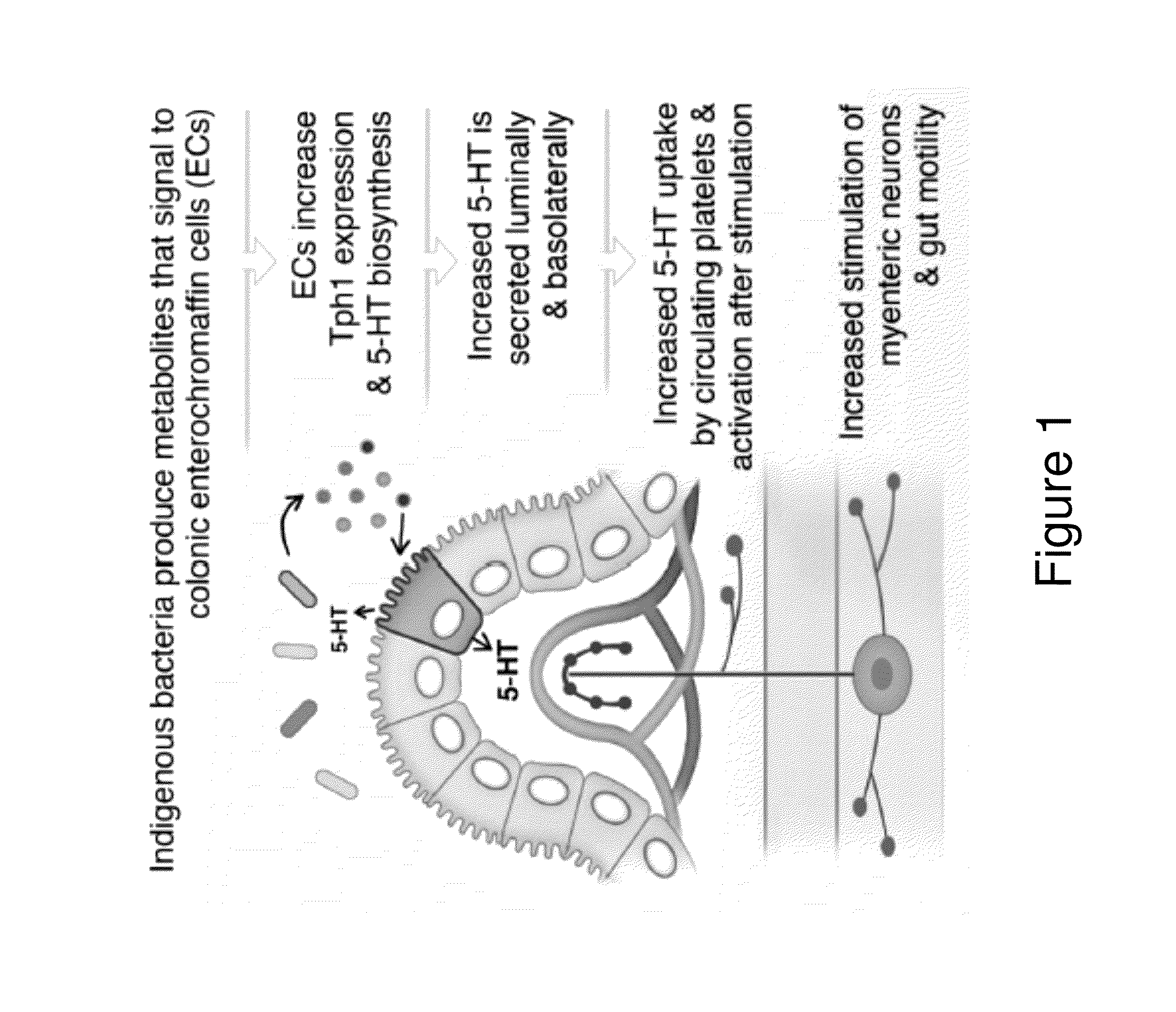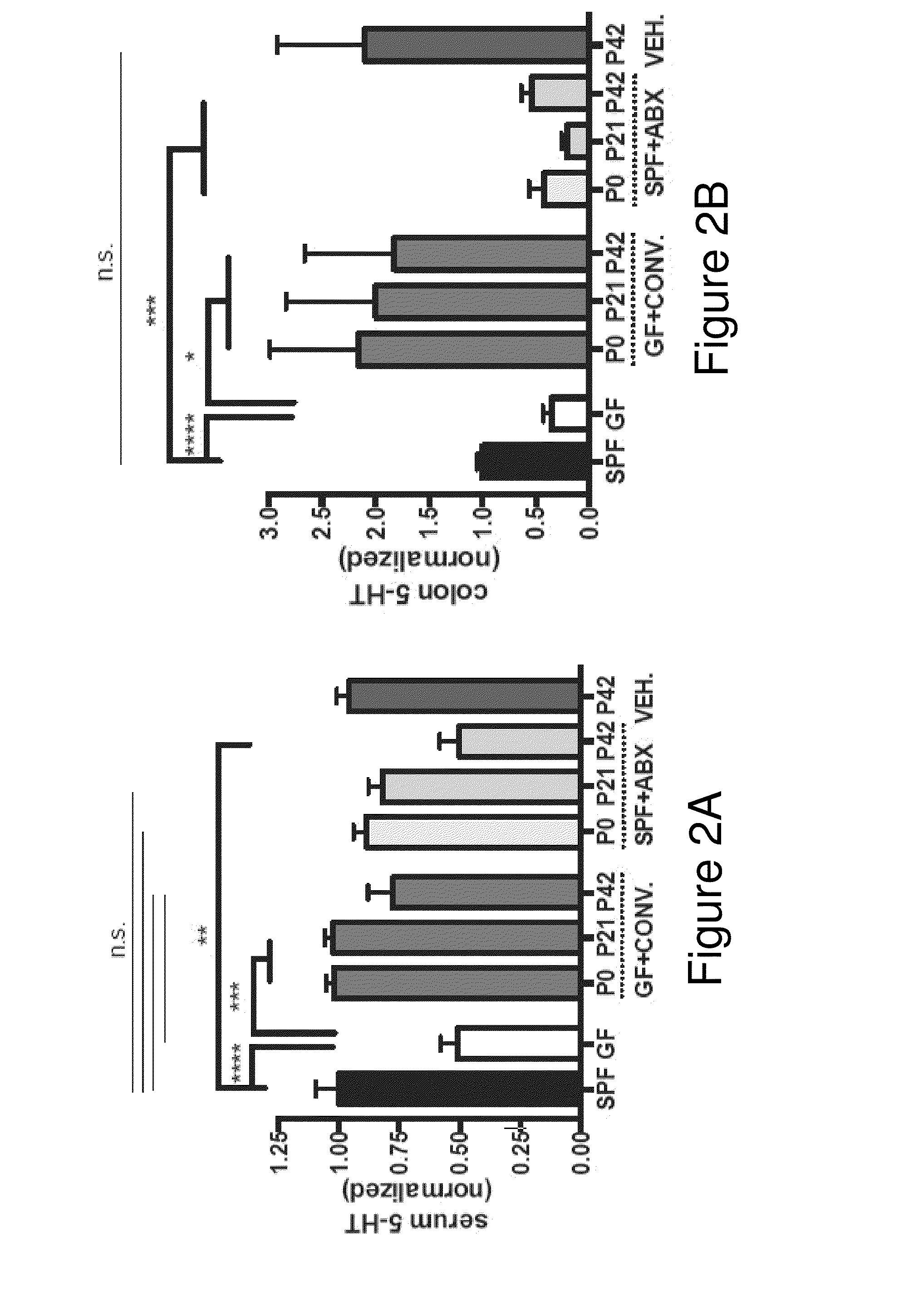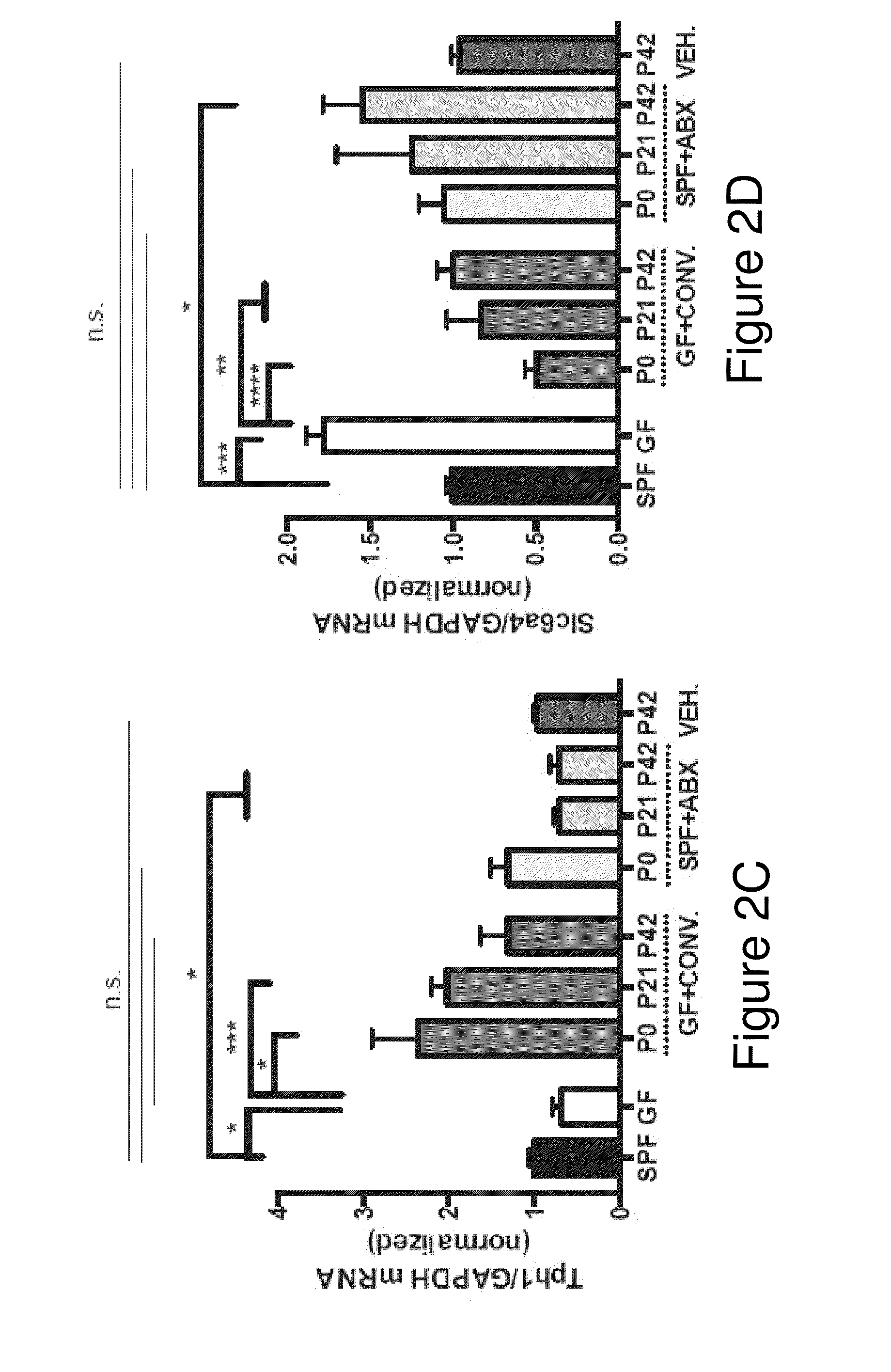Microbe-based modulation of serotonin biosynthesis
a serotonin biosynthesis and microbe technology, applied in the field of serotonin biosynthesis modulation and serotonin related diseases, can solve the problems of health risk, serotonin deficiency, etc., and achieve the effect of changing the level of serotonin
- Summary
- Abstract
- Description
- Claims
- Application Information
AI Technical Summary
Benefits of technology
Problems solved by technology
Method used
Image
Examples
example 1
The Gut Microbiota Modulates Host Peripheral Serotonin Levels
[0143]This example demonstrates the key role of gut microbiota in elevating the levels of 5-HT.
[0144]Adult GF mice exhibit dramatic decreases in levels of serum (FIG. 2A) and plasma (FIG. 3A) 5-HT compared to SPF controls, but the cellular sources of this disruption are undefined. Consistent with the previous understanding that much of the body's 5-HT derives from the GI tract, it was found that GF mice exhibit significantly decreased levels of colonic and fecal 5-HT compared to SPF controls (see e.g., FIGS. 2B and 3A). This deficit in 5-HT is observed broadly across the distal, medial and proximal colon (FIG. 3D), but not in the small intestine (FIGS. 3A, 5A and 5B), suggesting a specific role for the microbiota in regulating colonic 5-HT. Decreased levels of 5-HT are localized to colonic chromogranin A-positive (CgA+) enterochromaffin cells (ECs) (FIGS. 4A-4D), and not to small intestinal ECs (FIGS. 5A and 5B). Low 5-HT ...
example 2
Indigenous Spore-Forming Microbes Promote Host Serotonin Biosynthesis
[0149]This example demonstrates that indigenous spore-forming microbes promote host serotonin biosynthesis, for example by promoting tryptophan hydroxylase 1-mediated serotonin biosynthesis by colonic enterochromaffin cells.
[0150]The mammalian colon harbors a far greater abundance and diversity of microbes than does the small intestine. In light of our finding that 5-HT levels are decreased in colons but not small intestines of GF mice compared to SPF controls, it was hypothesized that specific subsets of gut microbes are responsible for affecting host 5-HT pathways. Mice monocolonized with the human symbiont Bacteroides fragilis or with the spore-forming Segmented Filamentous Bacteria (SFB) display deficits in serum 5-HT that are comparable to those seen in GF mice (FIG. 6A). Moreover, postnatal colonization (P42) with Bacteroides uniformis, altered Schaedler flora (ASF), an eight-microbe consortium known to corre...
example 3
Microbiota-Mediated Regulation of Host Serotonin Modulates Gastrointestinal Motility
[0154]The present example demonstrates that segmented filamentous bacteria-mediated increases in colonic 5-HT biosynthesis are important for gut motility function.
[0155]Intestinal 5-HT plays an important role in stimulating the enteric nervous system and GI function. To determine whether microbiota-dependent modulation of colonic 5-HT impacts GI motility, P42 GF mice were colonized with Sp and then tested for GI transit and colonic neuronal activation at P56. Sp colonization ameliorates GF-associated abnormalities in GI motility, significantly decreasing total transit time and increasing the rate of fecal output in a Tph-dependent manner (FIGS. 8A and 8B). Similar effects are seen in SLC6A4+ / − and − / − mice, where Sp colonization of antibiotic-treated mice restores GI transit time toward levels seen in SPF SLC6A4+ / − and − / − controls (FIG. 9E).
[0156]Consistent with deficits in GI motility, steady-state...
PUM
 Login to View More
Login to View More Abstract
Description
Claims
Application Information
 Login to View More
Login to View More - R&D
- Intellectual Property
- Life Sciences
- Materials
- Tech Scout
- Unparalleled Data Quality
- Higher Quality Content
- 60% Fewer Hallucinations
Browse by: Latest US Patents, China's latest patents, Technical Efficacy Thesaurus, Application Domain, Technology Topic, Popular Technical Reports.
© 2025 PatSnap. All rights reserved.Legal|Privacy policy|Modern Slavery Act Transparency Statement|Sitemap|About US| Contact US: help@patsnap.com



